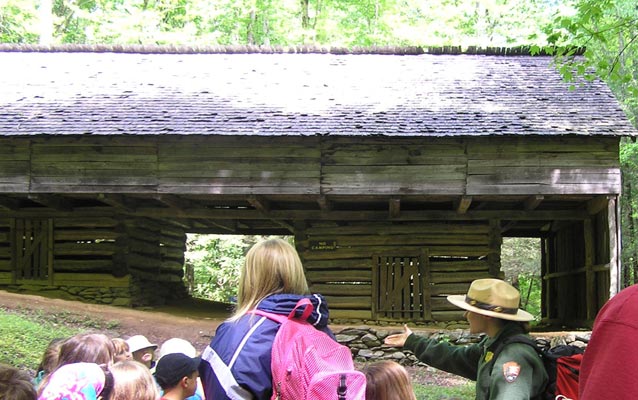Lesson Plan

NPS Photo
- Grade Level:
- First Grade-Third Grade
- Subject:
- Community, Family Life, History, Social Studies
- Duration:
- as needed
- Group Size:
- Up to 60
- Setting:
- classroom
- National/State Standards:
- Social Studies
Culture (1.01,1.02,3.02)
History (5.01,5.02,5.03,6.01) - Keywords:
- Great Smoky Mountains National Park, second grade, history, community, natural resources, settlers
Overview
This activity provides an opportunity for students to help save a piece of their own history by recording family interviews and sharing them with the class.This unit is broken into three parts. The overall unit involves a trip to the park and is accompanied by one preparation activity and two wrap-up activities. This is part 1 of the wrap-up activities of the unit.
Objective(s)
1) Students will have an opportunity to learn about family history.Background
Students learned how families lived in the early 1900’s after visiting Great Smoky Mountains National Park. Students discovered how family members depended on each other and how they lived during a time where few modern conveniences existed. They also learned how families handed down traditions through music, stories, and games. This activity provides an opportunity for students to help save a piece of their own history by recording family interviews and sharing them with the class.Teachers coming on the accompanying field trip should download our complete field trip packet that includes all of the lessons: Mountain Life pre-site lesson, information and directions about the field trip and Mountain Life Wrap-up part 1 and 2 post site lesson. Download the full Mountain Life Field Trip packet (includes Preparation and Wrap-up lessons).
Materials
This lesson includes instructions for the interview process and a Pre and Post Site Test.-
Mountain Life - Pre and Post Site Test
Pre site test to be used before the field trip and a post site test to use after the field trip. Download
-
Reflecting on History
Gives students guidance for interviewing family members. Download
Procedure
Step 1:Teachers have each student interview someone in their family, using the interview sheet.
Step 2: Students share their interviews in class.
Assessment
Administer a pre and post site test that is included in the unit.
Last updated: April 14, 2015
